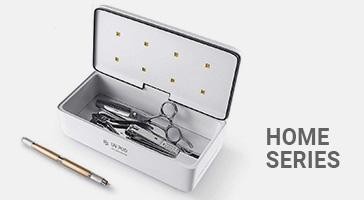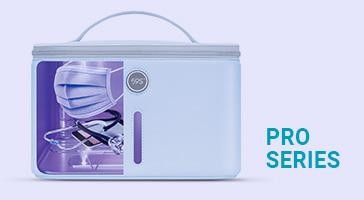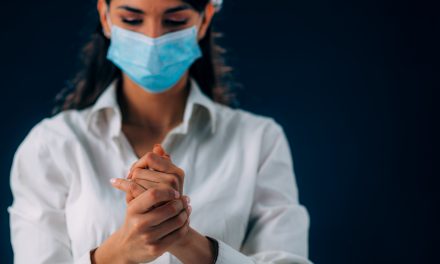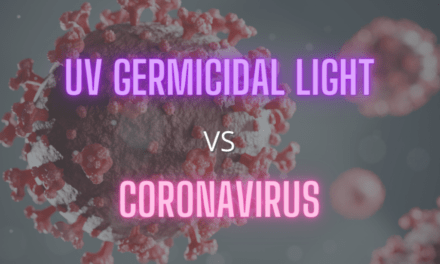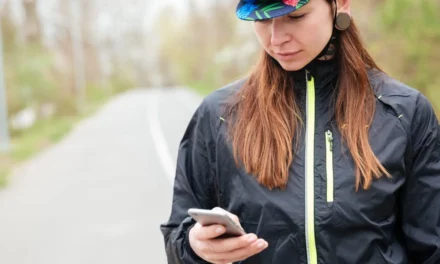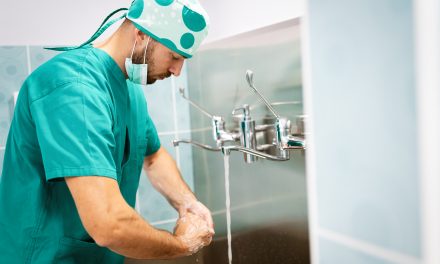UVC LIGHT CAN KILL COVID-19 AEROSOLS
Scientists from Cranfield University in the United Kingdom used digitalized simulations to illustrate how comparatively safer far-UVC radiation can possibly be in sanitizing a room. They consider this new information to be the secret to effectively eliminating aerosols contaminated with Covid-19, notably in enclosed spaces such as a clinic, a hospital room, an office, even a classroom. The research that was published in Scientific Reports Journal says that a low dosage of UVC can boost the sterilization rate by a whopping 50% to 80% in comparison to an enclosed space’s ventilation alone. They also said that unlike common UVC – which also effectively eliminates microorganisms but poses a danger to humans – far-UVC is harmless to us. The co-author of the research from Cranfield University, Liang Yang, said: “It is not always possible to socially distance in indoor environments, the chance of spreading the virus through aerosols contaminated with coronavirus increases.” “This study has demonstrated that far-UVC can be a safer and more economical alternative in mitigating Covid-19,” said Yang.
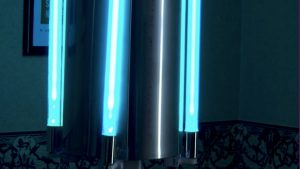
How effective is Far-UVC against coronavirus aerosols?
The scientist also recognized how effective far-UVC is, which can be compared to N95 masks in a poorly ventilated space. “With exhaustive and precise fluid dynamics sample, we tracked and destroyed the contaminated aerosols,” said Yang. Her co-author, Canadian Kirk Atkinson from Ontario Tech University, said: “Imagine disinfection in only a flick of a switch. That’s our main objective.” “The local government and businesses everywhere are focusing their investments in ventilation. Albeit ventilation by itself is not as efficient in getting rid of the virus. To compare, far-UVC is more inexpensive to implement,” said Atkinson.
How is UVC light currently used to kill the new coronavirus?
UV rays fall into three categories: UVA, UVB, and UVC. UVC rays have the most energy and the shortest wavelength. They are capable of inactivating bacteria and viruses. Ultraviolet light has a wavelength of 200 and 400 nm (nanometres). It is greatly effective at disinfecting because it damages the molecular bonds that hold the DNA of bacteria and viruses together, including “superbugs,” which were able to develop a tenacious resistance to antibiotics. Dominant UVC light has been regularly used to decontaminate surgical tools and hospital rooms. A study that included 21,000 patients who stayed overnight in a room where someone had been previously treated found that sanitizing a hospital room with UV light in addition to traditional methods of cleaning cut transmission of drug-resistant bacteria by 30%.
How long do coronaviruses survive on surfaces?
According to WHO, there is not a real timeline of how long a COVID-19 virus survives on surfaces. However, most likely, it behaves like other coronaviruses. Studies show that coronaviruses may survive on surfaces for a few hours up to several days depending on the varied conditions (e.g. type of surface, temperature or humidity of the environment). If you suspect that an area is infected, clean it with disinfectant; keep your hands clean with an alcohol-based sanitizer or with antibacterial soap and water; and if possible, limit touching your eyes, mouth, or nose.
How long does COVID-19 last on plastic and steel surfaces?
Recent research assessed the survival of the COVID-19 virus on different surfaces and reported that COVID can remain feasible for up to 72 hours on stainless steel and plastic, up to 24 hours on paper, and up to 4 hours on copper.
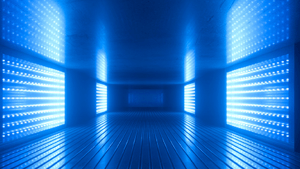
Can the coronavirus disease spread from person to person?
It is estimated that respiratory syncytial virus type-19 (COVID-19) is transmitted from person to person via droplets, contact, and fomites. The virus can spread when one individual converses, sneezes, or coughs, producing ‘droplets’ of saliva containing the COVID-III virus. COVID-19 transmission usually occurs among close contacts–including family members and frontline workers. Thus, it is important to maintain a distance of more than one meter away from any person who has respiratory symptoms.
What are the downsides to UVC light?
Exposure to the sun for extended periods of time can cause skin damage and eye damage. In order to protect your skin and eyes, it is necessary to wear good sunglasses and protective clothing. There are various negative effects of UV light on our eyes and skin. Some of the effects include skin cancer, photoaging, and cataract. Chronic eye damage caused by UV radiation cannot be treated.
Eye damage caused by UV light
When people think of protection against, the primary thing that springs to mind is skin. But our eyes are just as sensitive to UV rays – not just when the sun is shining but also in the shade. Not just at noon, but all day, every day. For example, fresh snow reflects up to 88% of UV radiation, water reflects up to 20% of UV radiation, sand reflects up to 25% of UV radiation, and concrete reflects up to 12% of UV radiation. Children’s eyes are notably sensitive to UV rays. As we turn 20, we’ve already been exposed to around half of the amount of UV radiation that a 60-year-old adult has been exposed to. To be specific, as we reach 20, we’ll have absorbed as much UV radiation as we would the age of 60. If we do not protect ourselves, we could end up damaging our eyelids, the skin around our eyes and even develop one of the many other illnesses that have an effect on the cornea. These comprise conjunctivitis and photokeratitis (a.k.a. ultraviolet keratitis). These refer to damage to the cornea caused by strong UV radiation that you find up in the mountains. When exposed to continuous intense light, we run the risk of the eye’s lens becoming cloudy, which can lead to premature cataracts. UV radiation is also suspected of causing tumors on the eyelid. Both sunglasses and clear lenses should be worn to protect the eyes and the surrounding skin from UV radiation. Full UV rays up to 400 nm should be covered. This way, you’ll be guarded whatever the weather – even on cloudy days.
Damaging consequences of UV light on your skin
UV radiation can also cause damage to our skin. It is a fact that excessive sun exposure, especially when used outdoors and spending too much time in the tanning bed, is responsible for the increased rate of skin cancer. UV exposure is the cause of the vast majority of skin cancer cases. This is a danger because the eyes are not normally taken into account when the risk of sun exposure is considered. As a matter of fact, 5-10% of all skin cancer cases involve the eyes. To avoid premature aging of the eyes and reduce the risk of cataracts or cancer, we advise wearing sunglasses and normal glasses with UV protection in the 400 nm range. This will also give the area around the eyes protection against premature photoaging, which is caused primarily by UV radiation and the side effects of skincare products. Generic long-term effects of excessive tanning are expanded pores and blood vessels, damage to the connective tissue, blackheads, and dry skin. Additionally, people with a sun allergy (to which UV light may contribute) can experience various symptoms that are collectively referred to as a “sun allergy”. However, a sun or light allergy in medicine does not exist. Rather, what people are referring to are certain symptoms rather than an actual allergy. Rashes, allergies, and other common illnesses that are often called sun allergies can be traced back to sunlight and to the UV component of light in particular. For example, a common illness caused by UV radiation is a polymorphic light eruption, also known as sun eczema. The symptoms of tanning and sunburned skin typically become obvious when we bare our skin to a great amount of sunlight, such as on the first long walk that we take when spring arrives. Tanning typically leads to extremely itchy reddening, blisters, or nodules on the areas that were exposed. Depending on the person’s skin type, the severity of the symptoms can vary hugely. Taking medicines in connection with UV radiation can result in a reaction that seems like an allergy. In medical terms, this illness is known as phototoxic or photodermatitis.
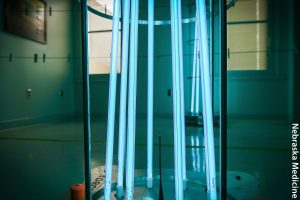
How much UV is too much?
Ultraviolet Index is a vital forecasting tool that helps us make an informed decision about how long we could stay under the sun and what type(s) of protection we should use. The intensity of the sun’s UV index gives us insight into how extreme the sun’s UV rays will be. With a high score on the UV index, the greater the strength of the sun’s UV rays and the faster we may experience the damaging effects of overexposure. This sentence should be rewritten to address public health goals. The use of the UV Index is intended to help people make informed decisions about protecting themselves during the summer months. An 8-10 (Very High) on the UV Index means the risk of harm coming from unprotected sun exposure is high. People with fair skin may burn in less than 10 minutes. Reduce as much sun exposure as possible during the midday hours of 10 a.m. to 2 p.m. Apply a broad-spectrum sunscreen of 30 SPF liberally.
What are the risks of UV lamps used for COVID-19 disinfection?
UV light sanitizers are the answer to inactivating coronavirus on our hands and smartphones, but devices designed for personal use may have more risks than they’re worth. Many people are turning to what’s been called nature’s hand sanitizer or ultraviolet light because it is the latest popular tool in the ongoing race to find ways to prevent oneself from catching SARS-CoV-2. Sanitation by way of UV light is not something new. It has been a useful technology for over 40 years, contributing to clean water and clean air. Consumer gadgets also utilize UV light to sanitize things, such as autonomous water bottles that self-cleans using UV and UV-emitting cases that clean your dirty phone. Things are not so obvious when it comes to the coronavirus, however. There are hazards that come with using UV light devices, especially when using them on your skin. Before you order your first UV light sanitizer you see, read up on the evidence about UV light disinfectants and the risks of using them on yourself.
How do UV light hand sanitizers work?
UV light comes fundamentally from the sun; however, UV light sources are also man-made, like tanning beds and the recently controversial UV disinfection lamps. There are 3 types of UV rays: UV-A, UV-B, and UV-C rays. Both UV-A and UV-B light cause premature skin aging and sunburn. Extended exposure to both has also been associated with the beginning of skin cancer. UV-C, which has the most energy of all three types, is the most harmful, but fortunately, our atmosphere absorbs it, so it doesn’t reach the Earth’s surface. There’s also man-made UV-C light: it’s what’s in the UV light sanitizers that companies claim kill the coronavirus. The National Academy of Sciences explained that it is possible that this is a fact because UV light had been used to disinfect surfaces and water for a long time, and it is generally successful. It is effective because UV-C light is strong enough to destroy the genetic material of bacteria and viruses. There’s no documentation right now that proves the typical sun exposure can inactivate Covid-19, so no, going outdoors on a sunny day won’t reduce your risk of catching it.
Is UV light in buildings safe?
UV light sanitization can be found in other places than just consumer devices. Some businesses are installing UV light fixtures in their facility to disinfect the building and avoid contracting COVID-19 through surfaces or air. UV light is the fundamental germ-killer in the natural environment, so it makes sense to take this approach. This practice, called “ultraviolet germicidal irradiation,” has been used for a long time in hospitals where pathogens abound. Magnolia Bakery in New York is the first to install human-safe UV light fixtures, including a portal through which all customers walk to destroy pathogens. Magnolia Bakery in New York is the first to install human-safe UV light fixtures, including a portal through which all customers walk to destroy pathogens.
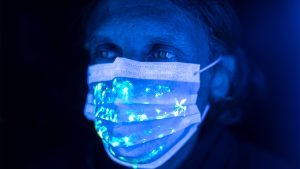
Gauging wider application of light radiation in combating the COVID-19 pandemic
We use light as a tool for disinfection and germ control in the modern industrialized world. UV radiation is commonly used by the healthcare industry because it can penetrate and neutralize RNA/DNA of bacteria, viruses, and other pathogens. This UV light can be used for reducing transmission risk within buildings. Now, as a result of the coronavirus pandemic, GUV is attracting interest for its application as a passive sanitizing design feature. Doctors have been using UV light to sterilize things for more than 100 years. Niels Finsen developed a UV light treatment for skin tuberculosis that resulted in an 83% cure rate. He is the Nobel Peace Prize winner in 1903 for his work with UV treatments. UVC light is applied to control pathogens and microbes in water treatment, surface disinfection, and ventilation systems. UV light is also a mainstream disinfection tool. This GUV disinfection technology has traditionally been used in the healthcare sector. For its virus-killing possibilities, GUV is being considered to be applied in other settings such as offices, schools, gymnasiums, and other public places. The idea of a static light system that kills the virus is attractive but is the technology safe?

